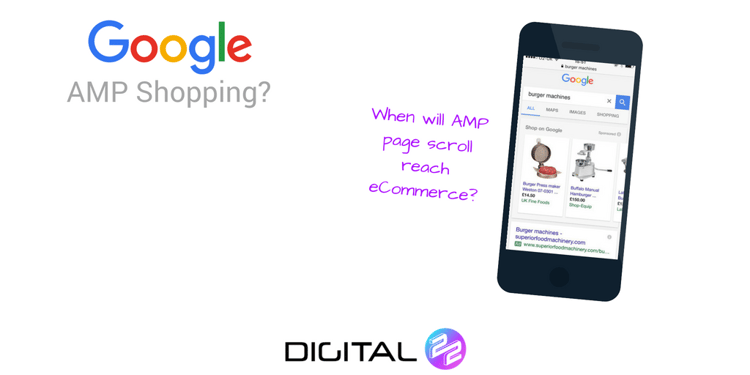Hot on the heels of our earlier blog post about how Google has been changing their SERP layout and algorithms, they have confirmed that AMP pages will expand beyond the "top stories" before the end of the year. They will be shown by including the ![]() logo in the result.
logo in the result.

What Is AMP?
AMP stands for Accelerated Mobile Pages.
They are stripped back versions of pages which are free of ads, run little or no Java and include load-friendly use of images. Besides being mobile optimised, they take it further by also being super-quick at loading.
This is a Google-endorsed community movement to make the search and web experience as smooth as possible for those on mobile devices. This is because these users are typically short on time, screen space or data amounts and connection strength (or all of the above).
There are currently more than 150 million AMP pages indexed and over 4 million new ones are being added every week.
AMP Started For News Results - But Use Is Expanding
Originally used by news sites, AMP results are shown on a carousel at the top of the SERP. But general AMP optimisation has expanded into eCommerce, educational (recipes, song lyrics, et al), travel and entertainment sites too.
If you're curious, check out the growing range of sites using AMP here.
Once the inclusion of AMP pages into the wider results goes live and more users begin noticing that these sites load quicker, it will become a natural ranking factor because your click-through-rate should improve and you'll therefore start climbing the rankings due to your good SEO.
I can already imagine a few technophobes I know, who regularly ask for help researching and booking things online, saying "click that one with the little lightning symbol; they load quicker."

Here's Google's example of a future AMP page being included in amongst traditional pages. Spot the  on the clicked link.
on the clicked link.
Another Possible Future Use
At the time of writing, AMP pages are confirmed to be included in the general search results so will form good SEO.
AMP pages will feature the AMP lightning bolt logo and mobile users will be directed to the quicker loading page which is viewed in the AMP viewer. Look out for this: ![]() .
.
The next logical step will be to incorporate AMP page viewing and scrolling between sites for eCommerce (as currently seen for news results - try it on your mobile device).
This would remove the suddenly laborious process of Searching for a product > Hitting the link to head to seller's site > See it isn't suitable so hitting "Back" to return to Google > Choosing another seller and hitting their link > Repeating until finally happy to purchase.
Instead, as products would be viewed in an AMP viewer, one simple swipe would take you to the next seller.

What You Need To Do And What You Need To Know About AMP
Google has given everyone a massive heads up about this with their announcement offering at least a few months grace to get our pages AMP inclusive. They told us in August and said it will be live "by the end of the year".
When it goes live, you won't be penalised for not offering AMP pages, you also won't be promoted if you do.
It's simply another optional way to stay ahead of your competitors by offering quicker loading pages for an ever increasingly mobile world.
Want Other Ways To Stay Ahead Of Your Competitors?
Then may we suggest taking a look at our free eBook which is filled with actionable advice to help you get more from your inbound marketing efforts and stay ahead of the competition.
Press the Download Now button to get your free copy.
Real Growth. Real Impact.
Time to rethink your whole SEO and content marketing strategy
Why it's vital and how to start building customer-led sales and marketing
How is AI disturbing Google search results and what can you do about it
How to avoid over optimising your website with Hannah Wilson, SEO Specialist
Google Search API leaks: All you need to know [LIVE BLOG]
Choosing between a HubSpot Partner and an SEO-specific agency
What's happening with Google SGE and what should we do?
See why enterprises choose Avidly
Let’s build your HubSpot success story
Compelling final call to action - with accompanying link to Contact page





![Google Search API leaks: All you need to know [LIVE BLOG]](https://www.avidlyagency.com/hs-fs/hubfs/cloud.jpg?width=400&height=225&name=cloud.jpg)


